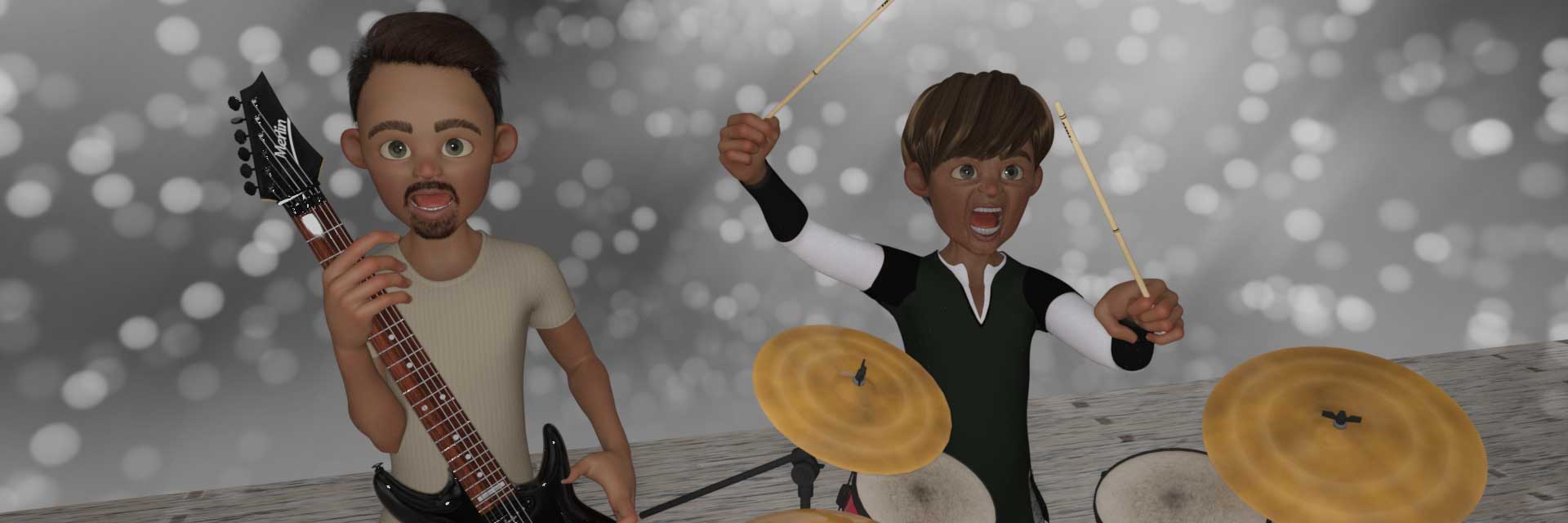What was typical music of the Middle Ages?
The Medieval period was a time of upheaval and transformation. The social, political and religious landscape of Europe shifted from the collapse of the Roman Empire to the rise of Christianity as the primary religion on the continent. This period also marks when music began to change from performance with instruments primarily for entertainment or ritualistic purposes to something that became more about communication, expression and personal connection. The Middle Ages was also a time of musical transition. From early chants and hymns of Christian faith to courtly love songs and ballads sung by wandering minstrels, Medieval music evolved rapidly.
In this article we explore what type of music was popular during these times, how it changed over time, and what factors played a role in its evolution.
What Was the Typical Music of the Middle Ages?
During the early Middle Ages, music was primarily Gregorian chant used in religious practices and ceremonies. At the time, most people were illiterate, so music also acted as an oral tradition to teach many aspects of society and culture. The Catholic Church has been a major factor in shaping music throughout history, and during the Middle Ages, this was largely true.
As the Middle Ages progressed, more secular music became popular. This included courtly love songs, ballads, and troubadour poetry set to music. At the same time, instruments such as the flute, lute, and harp were introduced to Europe from the Middle East, Central Asia, and Africa.
Whilst the music of the Medieval period was predominantly religious and sacred, it was also a time of change and innovation. Innovations in musical instrumentation and the growing interest in secular music helped to shape the musical landscape of the time.
Folk Music Of the Period
During the Medieval period, the ordinary people of Europe primarily listened to folk music. But what does that actually mean? Well, folk music is any music that is not created for commercial or artistic purposes. It is music that is passed down from one generation to another through informal and non-specialist transmission. In other words, folk music is music that is not written down but rather is either taught by one person to another or is passed down orally through generations.
It is likely that many Medieval people did not even know that they were listening to folk music. After all, this was the music that was part of their everyday lives. But we can still talk about it as a distinct genre of Medieval music since folk music has its own identifiable traits. For example, folk music often uses scales or chords that are not usually found in other musical genres. It is also likely that folk songs were not written down with notation or musical accompaniment but instead were performed a cappella.
This music was typically home grown, with lyrics that reflected the lives of ordinary people. It was often expressive of both joy and sorrow, either relating to the celebrations and rituals of everyday life or the sorrows and hardships that these same people dealt with on a daily basis.
How Did Middle Age Music Change Over Time?
Early Medieval music was an outgrowth of Roman song traditions. These songs were primarily for entertainment and ritualistic purposes, and as such were heavily based in percussion with little to no melodic structure. It was not until the High Middle Ages (c. 10th-13th century) that music began to change from performance with instruments primarily for entertainment or ritualistic purposes to something that became more about communication, expression and personal connection. During this period, the church became the primary institution responsible for music in Europe. And while early Christians used music for a variety of purposes, by the late 11th century the Church had decided to limit music to ritualistic and liturgical contexts.
The Church had a particular interest in music because of its ability to educate, inspire and influence people. Church officials were concerned that secular music—what we today call folk music—might distract people from religious practices and beliefs. They also wanted to maintain a level of control over the music that was being performed.
The Impact of the Church on Music in the Middle Ages
When the Roman Empire collapsed, Christianity spread across Western Europe. The spread of Christianity marked a dramatic shift in the way people viewed music. While music had previously been used as a way to communicate with the divine, it was now primarily used as a way to worship God. Chants and hymns, which featured monophonic music (single melodic line with no harmony or accompaniment), became the most common form of music in Medieval Europe. These songs were often accompanied by instruments, especially bells and drums, for use in services and during religious festivals, processions, and pilgrimages. The creators and performers of these songs were usually members of the clergy.
Church music was written and performed in Latin, making it inaccessible to the general public. This helped the Church maintain power by keeping the musical knowledge of the people limited.
The Impact of Society on Music in the Middle Ages
Music isn't just an artistic expression – it's also a social expression. And the same can be said for the music of the Middle Ages. While it didn't have the same level of artistic expression that we know today, music in this time served a unifying purpose. Whilst much of the music of the Middle Ages was religious, it also served as a way for people to express themselves and their connection to their faith. Church choirs served as a way to unite communities and strengthen religious sentiment.
One example of how music was used to bring people together can be seen in the rise of courtly love songs and troubadour poetry in the Middle Ages. These types of songs often served as a way for people to express their feelings of love and admiration toward others.
With the expansion of trade and the rising middle class in Medieval Europe, the role of music in society changed drastically. During the early Medieval period, music was primarily used for ritualistic or communal use. Musicians earned their living primarily through their position in the Church. During the later Medieval period, music was used more frequently as a form of entertainment. It became increasingly common for members of middle-class society to hire musicians to perform at parties and other social gatherings.
This shift in the use of music can be attributed to a variety of factors. One of the most significant factors was the invention of the bagpipe. The bagpipe allowed for the creation of a more complex musical instrument that could be played by a single musician. It was particularly popular during the Medieval period because it could be used to perform a variety of different music types. The bagpipes were also relatively easy to create, making them a popular choice for peasants and other members of the lower classes.
The Impact of Technology on Music in the Middle Ages
From early on in the Medieval period, the technology of instruments played a significant role in the music of the era. The earliest evidence of instruments used in concerts dates back to Ancient Greece, but they were likely used in other civilizations as well. The Romans were particularly known for their use of instruments in concerts and the instruments that were used during the Medieval period were typically variants of those used by the Romans.
The reason we refer to the technology of instruments in the Medieval period as having an impact impact on music is because the use of instruments in concerts allowed people to create music on a scale and with a level of complexity that was unprecedented in human history. This was important because it helped take music from being a primarily social activity to something that could be experienced by a wide variety of people in a variety of contexts.
Summing up
The Middle Ages was a time of upheaval and transformation. The social, political, and religious landscape of Europe shifted from the collapse of the Roman Empire to the rise of Christianity as the primary religion on the continent. This period also marks the time when music began to change from performance with instruments primarily for entertainment or ritualistic purposes to something that became more about communication, expression, and personal connection.
The typical music of the Middle Ages was dominated by religious hymns, operatic arias, courtly love songs, and ballads, and folk music.

